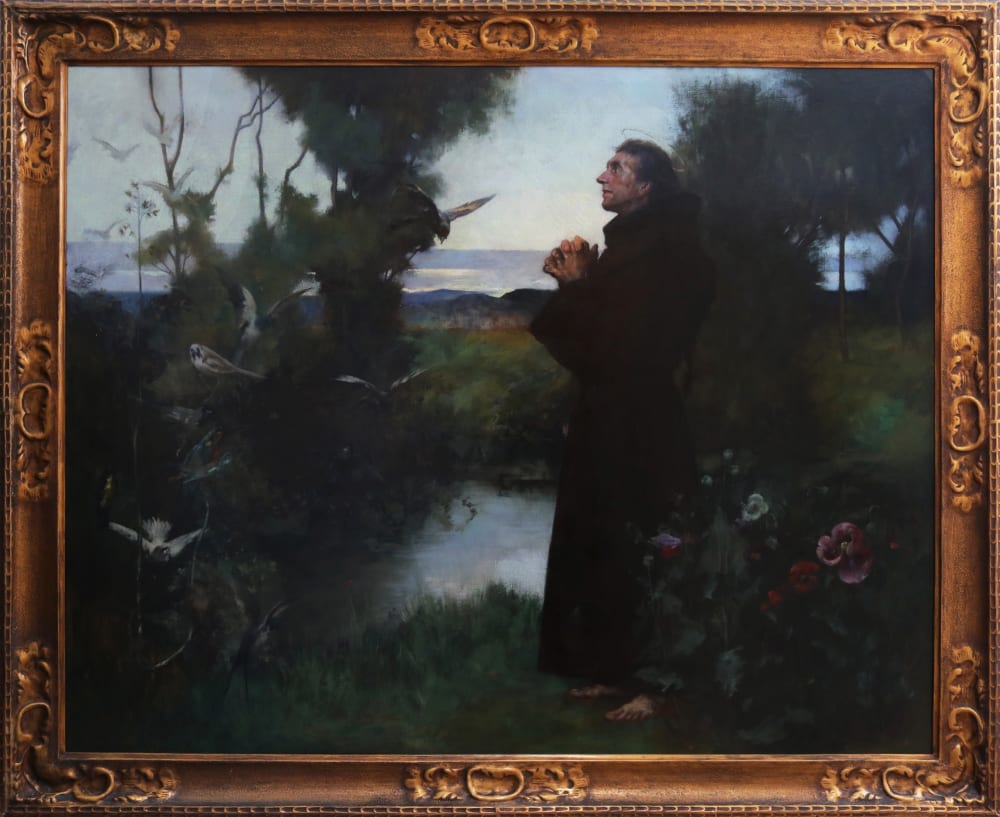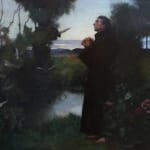
St Francis of Assisi by Albert Chevallier Tayler
Albert Chevallier Tayler 1862-1925
Framed: 134 x 165 cm (52 7/8 x 64 3/4 ins)
Provenance
WH Lanes, 15 Dec 2016
Bolitho School, Penzance, Cornwall
Exhibitions
Penlee House Gallery & Museum, 1998-1999
Painted in 1898, St Francis of Assisi is a mature Chevallier Tayler work which demonstrates his gift with the human form and influence of the Newlyn School; its signature square brush technique and pursuit of natural outdoor settings. There is also a touch of the pre-Raphaelite to this work which may bear testament to London’s influence upon the painter.
Tayler, who converted to Catholicism a decade earlier, has depicted St. Francis of Assisi, patron saint of animals and the environment, with hands clasped in prayer to nature’s bounty. We see birds flocking to the saint, an abundance of wildflowers, a wooded copse, a small lake and meadow and in the distance, mountains rising to a tranquil sky. Amongst the birds we can identify a kingfisher, swallow, goldfinch, dove and wood pigeon. The artist’s expression of God’s bountiful creation and the natural world.
Born in Italy around 1181-1182 Francis preached sermons to animals and insisted all creatures were brothers and sisters under God. In 1209, he received permission from Pope Innocent III to form the Order of the Franciscans.
On October 4, 1226, Francis died in the town of Assisi and was quickly canonized by Pope Gregory IX. In 1979, Pope John Paul II paid further tribute to Francis' love for creation by declaring him the patron saint of ecologists. One could say a saint designed for, or needed by, the 21st Century!
This large work was exhibited at Penlee House Gallery & Museum and spent many years in the former Bolitho School in Penzance. The work is presented in a carved gilded wooden frame.




